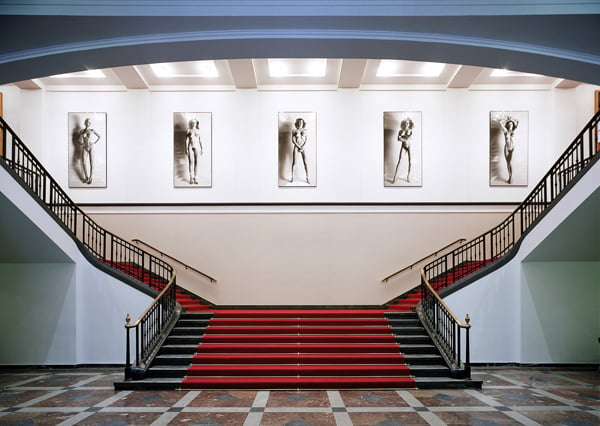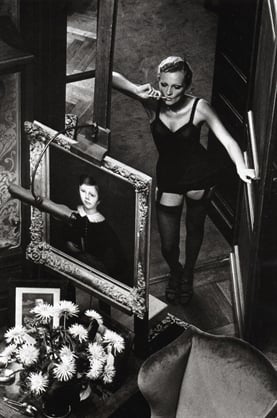

The online art market is being flooded with forged photographs purporting to be originals by nude master Helmut Newton. According to the Helmut Newton Foundation, forgeries have been a long-running issue for the photographer who died in 2004. Yet the expansion, in recent years, of online selling platforms on which works are not vetted has made the regulation of fakes nearly impossible.
“It’s hard to get them off the market,” Helmut Newton Foundation curator Matthias Harder told artnet News. “At the big auction houses you have a contact person you can speak with,” he said. “But with the online platforms it’s difficult because there’s no one. It’s just a private person selling to a private person.”
Nonetheless, just this month, the foundation made a significant breakthrough in the European market for forged Helmut Newton works. An unnamed Swiss individual who had been selling forged photographs with false signatures on an online auction site, Ricardo, was turned over to Swiss police. “In this case we identified the person behind the forgeries and it could be stopped,” Harder recounts. However, a quick search of other peer-to-peer platforms like eBay turns up hundreds more examples of photographs, which claim to be Newton originals but bear glaring red flags that they are not.
For Harder, due to the vastness of the issue, much of the responsibility falls on buyers to pick out the almost laughable warning signs. “Most of the forgeries are of really poor quality,” he says. “Most of the ones we see are printed on A4 paper on an inkjet printer.” Newton never made digital prints, only silver gelatin and c-prints.

Helmut Newton, Roselyne in Arcangues, 1975, gelatin silver print, sold on artnet Auctions.
According to the curator, the vast majority of the fakes are produced by scanning or taking photos of existing works or reproductions, techniques that lead to yet more glaring irregularities. “Some are even cropped because they didn’t have a large enough scanner.” he says, further explaining that in some cases color photographs now appear in black and white. At other times black and white photos have been colorized. Others feature faked Newton signatures in felt-tip pen on their faces. Newton himself only ever signed the reverse of his photographs in pencil and included the title and date.
In 2007, the foundation began sending out alerts to collectors when particularly nefarious works came on offer. Yet, perhaps the most telling sign to complete novices is price. Some photographs purporting to be originals found with a brief search are available for under $800, many for much less, whereas authentic originals routinely sell in the five and six figure range. But, couldn’t they just be an unbelievable deal? Yeah, probably not.





